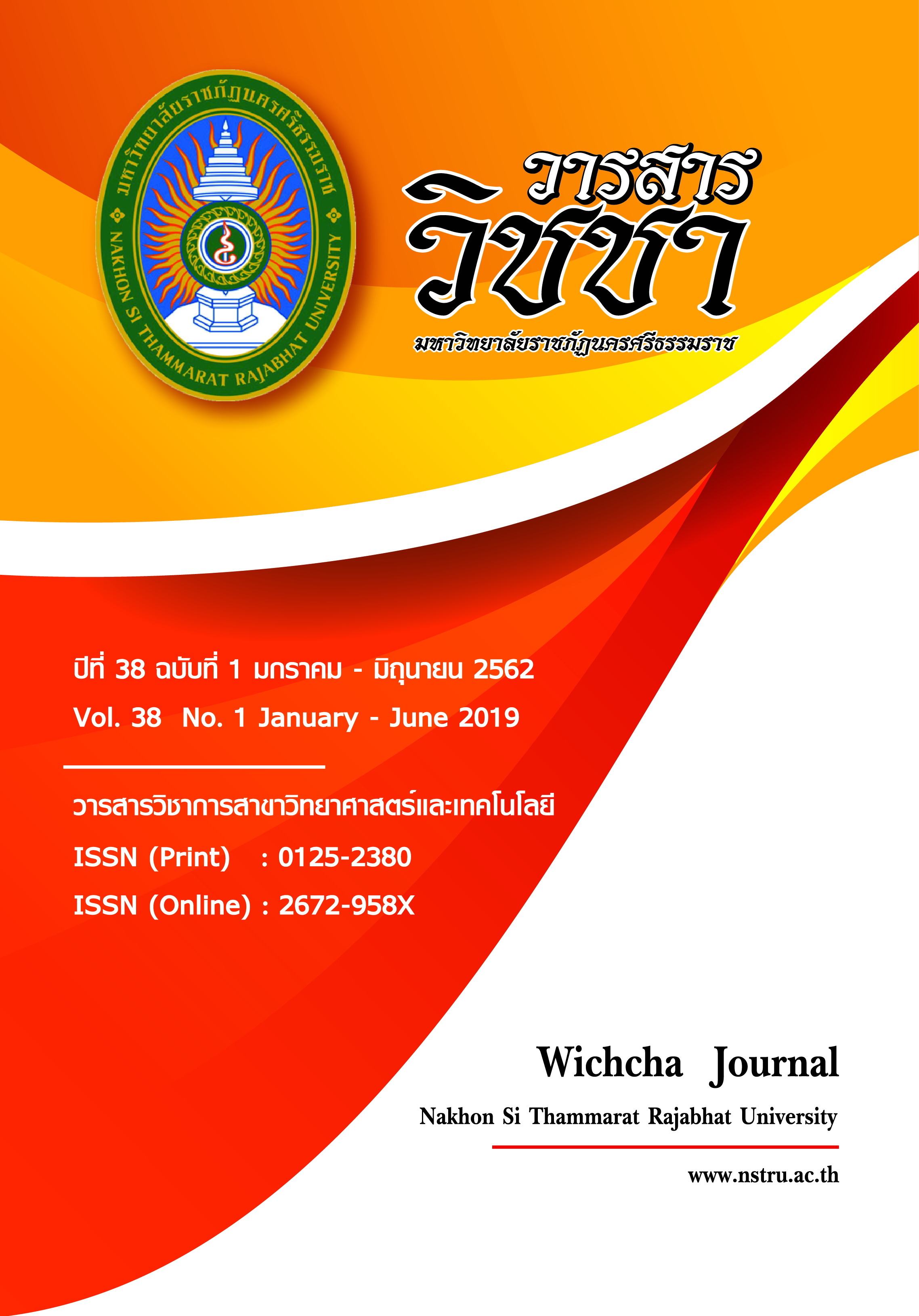Health Risk Assessment on Vegetable Consumption for People Living around Nong Leng Sai, Mae-Jai District, Phayao Province. การประเมินความเสี่ยงทางสุขภาพจากการบริโภคพืชผักของประชาชนที่อาศัยรอบหนองเล็งทราย อำเภอแม่ใจ จังหวัดพะเยา
Main Article Content
Abstract
The purposes of this research were to study food consumption pattern, food consumption behavior and health risk assessment on vegetable consumption in Nong Leng Sai, Mae-Jai District, Phayao Province, compared with the Acceptable Daily Intake (ADI). Analysis of cadmium (Cd) and Lead (Pb) content in 5 vegetables (Ipomoea aquatica Forsk, Monochoria hastata (L.) Solms, Neptunia oleracea, Nymphaea lotus and Sphenoclea zeylanica Gaertn) found that cadmium was not detected in all vegetable samples. Lead concentrations (0.0325 mg/kg) were found in 3 vegetable samples including I. aquatica Forsk, M. hastate (L.) Solms and Neptunia oleracea. Human health risk assessment found that average lead intake from vegetable was about 5.72 μg/day, lower than the Tolerable Daily Intake (TDI) about 34 fold (TDI of 3.6 μg/day body weight/day). In conclusion of this study, adverse health effects may not occur.
Article Details
เนื้อหาและข้อมูลในบทความที่ลงตีพิมพ์ในวารสารวิชชา มหาวิทยาลัยราชภัฏนครศรีธรรมราช ถือเป็นข้อคิดเห็นและความรับผิดชอบของผู้เขียนบทความโดยตรง ซึ่งกองบรรณาธิการวารสารไม่จำเป็นต้องเห็นด้วยหรือร่วมรับผิดชอบใด ๆ
บทความ ข้อมูล เนื้อหา รูปภาพ ฯลฯ ที่ได้รับการตีพิมพ์ในวารสารวิชชา มหาวิทยาลัยราชภัฏนครศรีธรรมราช ถือเป็นลิขสิทธ์ของวารสารวิชชา มหาวิทยาลัยราชภัฏนครศรีธรรมราช หากบุคคลหรือหน่วยงานใดต้องการนำข้อมูลทั้งหมดหรือส่วนหนึ่งส่วนใดไปเผยแพร่ต่อหรือเพื่อการกระทำการใด ๆ จะต้องได้รับอนุญาตเป็นลายลักษณ์อักษรจากวารสารวิชชา มหาวิทยาลัยราชภัฏนครศรีธรรมราชก่อนเท่านั้น
The content and information in the article published in Wichcha journal Nakhon Si Thammarat Rajabhat University, It is the opinion and responsibility of the author of the article. The editorial journals do not need to agree. Or share any responsibility.
References
จังหวัดพะเยา.
นฤมล สุขพันธ์ และปิยวรรณ เนื่องมัจฉา. (2555). การจัดการน้ำของชุมชนในพื้นที่ป่าพรุ : ศึกษาชุมชนบ้านเนินธัมมัง ตำบลแม่เจ้าอยู่หัว อำเภอเชียรใหญ่ จังหวัดนครศรีธรรมราช. วารสารวิชชา มหาวิทยาลัยราชภัฏนครศรีธรรมราช, 31(1), 29-38.
รัตนาภรณ์ อาษา อภิเชษฐ์ จำเนียรสุข และพิชสุดา เดชบุญ. (2560). ปัจจัยที่มีผลต่อภาวะสุขภาพของประชาชนในเขตนิคมอุตสาหกรรมนวนคร จังหวัดปทุมธานี. วารสารวิชชา มหาวิทยาลัยราชภัฏนครศรีธรรมราช, 36(1), 61-71.
สำนักงานนโยบายและแผนสิ่งแวดล้อม. (2561). พื้นที่ชุ่มน้ำที่มีความสำคัญระดับนานาชาติ. สืบค้นเมื่อ 10 มกราคม 2561, จาก: https://wetland.onep.go.th/NongLengsai.html.
Agency for Toxic Substances and Disease Registry (ATSDR). (2007). Toxicological profile for lead. Retrieved 20 January 2017, from: https://www.atsdr.cdc.gov/ toxprofiles/tp13.pdf.
Codex Alimentarius Commission. (2006). Joint FAO/WHO Food standands programme. 29th session international conference centre. Retrieved 20 January 2017, from: www.fao.org/input/download/report/657/al2912e.pdf.
Food Standards Agency. (2008). Front of pack nutritional signpost labelling technical guide issue. Retrieved 20 January 2017, from: https://www.food.gov.uk/ multimedia/pdfs/frontofpackguidance2.pdf.
Horticulture Australia. (2003). Managing cadmium in vegetables. Retrieved 25 January 2017, from: https://www.horticulture.com.au.
Joint FAO/WHO Expert Committee on Food Additives (JECFA) (2000). Safety evaluation of certain food additives and contaminants. Retrieved 20 January 2017, from: https://www.inchem.org/documents/jecfa/jecmono/v46je01.htm.
Page, NP. (1994). Human health risk assessment. Florida: CRC Press, Boca Raton.
United States Environmental Protection Agency (2000). Guidance for assessing chemical contaminant data for use in fish advisories. Retrieved 25 January 2017, from: https://www.epa.gov/sites/production/files/2015-06/documents/ volume2.pdf.
World Health Organization (1992). IPCS environmental health criteria 134: Cadmium. Retrieved 25 January 2017, from: https://www.inchem.org/documents/ehc/ehc/ehc134.htm.
Yamane, Taro. (1973). Statistics: An introductory analysis. (3th ed). New York: Haper and Row.

